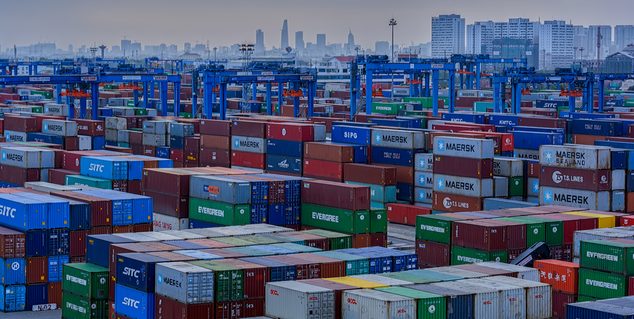The new energy crisis – food scarcity – presents challenges and opportunities as the world prepares for structural agriculture shifts.
Key Points
- In our first instalment of this series focusing on the shifting agricultural landscape, we examine agricultural history and how food is now more efficiently harvested and readily available than ever before.
- In a world with real biophysical requirements, we believe food should be viewed as one of the most basic and imperative forms of energy input.
- We believe that understanding developing secular trends in water ‘volatility’ will be of utmost importance.
There are few commodities as basic – yet essential – as food and agriculture. While many investors and commentators remain focused on rising gasoline prices and spiking global natural gas, under our very nose another form of energy crisis could be developing: food scarcity. While world-wide food poverty remains, over the last century there has been notable improvement in securing and producing food on a global basis. In the history of man, food has rarely been more readily available, calorie-dense or secure. In the US, food spending as a percentage of PCE (personal consumption expenditure) has steadily gone down for the last seven decades. While food expenditures for the average US consumer hovered around 18-20% in the 1960s, they are now typically below 8% (excluding a brief spike during the beginning of the 2020 Covid pandemic).[1] In this series, we examine the shifting landscape in the agricultural industry and the physical and financial implications for investors over the coming years.
How Did We Get Here?
Currently, it is clear that food production has become much more secure while household food expenditures have decreased. But what drove this multi-generation improvement in food production? Several factors are responsible for this efficiency shift, but most can be bucketed into two major categories: first, better technologies and techniques, and, secondly, the allocation of vast amounts of additional arable land to crops and livestock.
The widespread adoption of genetically modified seeds, along with increased application of fertilizers and crop protection chemicals, have made great leaps in farming productivity. Better machines and precision farming have enabled modern farms to more efficiently produce calories and energy than ever in our history. As an example, US corn yields (the number of bushels per harvested acre) have doubled since the 1970s.[2] Additionally, the amount of global land dedicated to the production of food is at record levels. In recent decades, Brazil and broader Latin America have grown as agricultural production powerhouses. Brazil, the top global producer of beef and soybean, has alone converted 17% of its rainforest for agriculture over the last 50 years.[3]
What is a Farm?
There are many methods of viewing and analyzing farms and their output. First, a farm can be defined as an exporter. But what are farmers really exporting? The sunlight and soil are free and presumably static (although topsoil erosion is an important issue). However, one of the biggest variables in a successful and productive farming operation is the availability of water – that is essentially what farmers are exporting. We believe that understanding developing secular trends in water ‘volatility’ will be of utmost importance as water is not necessarily scarce, but is often not available in the places we need most while overly abundant in others.
By another measure, farms can be studied as outdoor factories where the production process is done without ceilings and walls. From this perspective, the single biggest uncontrollable variable would be climate. Growing crops and raising livestock is heavily reliant on dependable and predictable weather.
The New Energy Crisis
It is important to remember that energy is not just oil, natural gas and other traditional hydrocarbons. In a world that has real biophysical requirements, we believe food should be viewed as one of the most basic and imperative forms of energy input, especially as the global population is expected to grow from roughly eight billion people to around 10 billion by 2050.[4]
In this series, we will present the all-too-real likelihood that the next 20 to 30 years will not be like the previous 70. The range of topics discussed will be wide and include:
- The rising importance of geopolitics in the global food supply chain and food security
- Is the fear of ‘peak ag’ over-sensationalized? What are the factors that can drive a pause or acceleration in productivity?
- The effects of climate change on supply stability and the growing environmental impact from increased calorie demand
- Changes in consumer behavior, as well as challenges and positive developments that could affect how the world produces and consumes food
At our conclusion, we will demonstrate how these issues are interconnected. We believe that the examination of our agricultural environment can provide attractive investment opportunities that can also help us better prepare for the structural shifts that are to come.
If agriculture goes wrong, nothing else will have a chance to go right.
M.S. Swaminathan
[1] Source: Bureau of Economic Analysis, as of July 27, 2022.
[2] Source: Our World in Data (https://ourworldindata.org/crop-yields), as of July 27, 2022.
[3] Source: Council on Foreign Relations (https://www.cfr.org/in-brief/deforestation-brazils-amazon-has-reached-record-high-whats-being-done), as of March 17, 2022.
[4] Source: United Nations (https://www.un.org/en/global-issues/population#:~:text=The%20world%20population%20is%20projected,surrounding%20these%20latest%20population%20projections).
PAST PERFORMANCE IS NOT NECESSARILY INDICATIVE OF FUTURE RESULTS. Any reference to a specific security, country or sector should not be construed as a recommendation to buy or sell this security, country or sector. Please note that strategy holdings and positioning are subject to change without notice. For additional Important Information, click on the link below.
Important information
Issued by Newton Investment Management North America LLC ("NIMNA" or the "Firm"). NIMNA is a registered investment adviser and subsidiary of The Bank of New York Mellon Corporation ("BNY Mellon"). The Firm was established in 2021, comprised of equity and multi-asset teams from an affiliate, Mellon Investments Corporation. The Firm is part of the group of affiliated companies that individually or collectively provide investment advisory services under the brand "Newton" or "Newton Investment Management" ("Newton"). Newton currently includes NIMNA and Newton Investment Management Ltd. ("Newton Limited").
Material in this publication is for general information only. The opinions expressed in this document are those of Newton and should not be construed as investment advice or recommendations for any purchase or sale of any specific security or commodity. Certain information contained herein is based on outside sources believed to be reliable, but its accuracy is not guaranteed. Statements are correct as of the date of the material only. You should consult your advisor to determine whether any particular investment strategy is appropriate.
Personnel of certain of our BNY Mellon affiliates may act as: (i) registered representatives of BNY Mellon Securities Corporation (in its capacity as a registered broker-dealer) to offer securities, (ii) officers of the Bank of New York Mellon (a New York chartered bank) to offer bank-maintained collective investment funds, and (iii) Associated Persons of BNY Mellon Securities Corporation (in its capacity as a registered investment adviser) to offer separately managed accounts managed by BNY Mellon Investment Management firms, including NIMNA and (iv) representatives of Newton Americas, a Division of BNY Mellon Securities Corporation, U.S. Distributor of Newton Investment Management North America.
This material is for institutional investors only. This publication or any portion thereof may not be copied or distributed without prior written approval from the firm.
No investment strategy or risk management technique can guarantee returns or eliminate risk in any market environment and past performance is no indication of future performance.
Any forward-looking statements speak only as of the date they are made, and are subject to numerous assumptions, risks, and uncertainties, which change over time. Actual results could differ materially from those anticipated in forward-looking statements.
Information about the indices shown here is provided to allow for comparison of the performance of the strategy to that of certain well-known and widely recognized indices. There is no representation that such index is an appropriate benchmark for such comparison.





